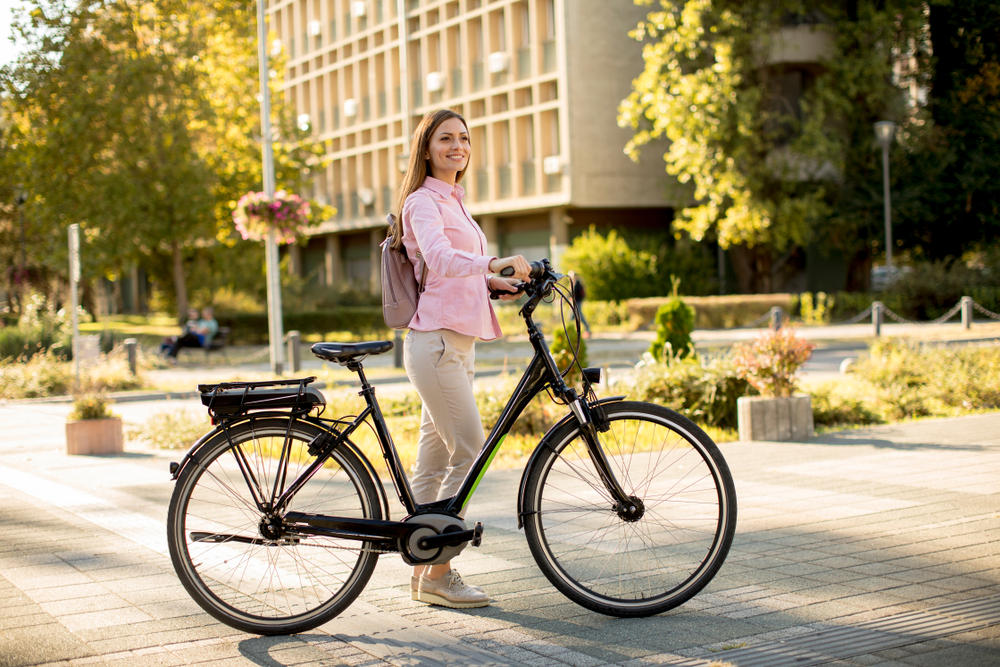
Does weight matter with e-bikes? Seems like a simple enough question, right? Some things matter. Examples include: interest rates, the cost of food and the music of Led Zeppelin. Some things don’t matter. Examples of those include: debates about Kirk vs. Picard. (They were both awesome.)
An e-bike’s weight is a little Column A and a little Column B. More precisely, an e-bike’s weight doesn’t matter … until it does. This would be where an attorney would object and complain the answer was vague, and it is. But we will clarify our answer; it’s just going to take a bit.
An e-bike’s weight matters if its weight is so high that it causes control issues for the rider. Let’s dig into that.
Not all e-bikes weigh equally
E-bikes can range from as low as 35 lbs. or so up to more than 100 lbs. for some of the stouter overlanding e-bikes. The natural question is why there is so much variation in e-bike weights. The first detail to keep in mind is that weight and price are inversely proportional: That is, as an e-bike’s weight goes down, its price goes up, generally.
As e-bikes gain weight, they need more power to accelerate and go uphill. Also, as they increase in weight and as the motors become more powerful, range drops. So to improve the range, the manufacturer makes the battery bigger. It’s easy to see how this can turn into a cray-cray cycle of ever-growing motor and battery.
Notable exceptions in this is that there are some e-bikes out there, like the Lectric XP Lite and the FLX Babymaker 2, that are built with a smaller motor and as a result the battery doesn’t have to be so huge. Neither e-bike is expensive, either.
The issues
So what sorts of problems can a rider encounter if an e-bike is heavy? A bike is never easier to manage than while in the saddle pedaling. That’s why the biggest issues occur before a rider gets on the bike or after they get off of it. That’s because it’s easiest to manage its weigh when centered over it. Most of us have had the experience (when younger) of holding a bike to our side and had the weight of the bike tip away from us, only to pull us over with it.
The higher the proportion of a rider’s weigh the e-bike is, the greater the opportunity for this to happen. Not that’s it’s likely, but it is much more likely for it to happen to a kid who weighs 80 lbs. than it is for an adult who weighs 180 lbs.
The other issue a rider may encounter is, again, if the rider is relatively light, a heavy e-bike may be difficult to steer. The heavier the e-bike, the more it will want to go straight, and the lighter the rider, the more they will struggle to lean the bike for a turn.
How heavy is heavy?
E-bikes in the $1000-$2000 price range tend to weigh between 60 and 80 lbs. Some weigh less and some weigh more, but that’s where most fall. Many people will conclude that to ride an 80-lb. e-bike they will need to be able to pick up an 80-lb. e-bike. Not so.
Let’s ask the question: How often is a person likely to pick up their e-bike? Not very is the answer. Anyone who stores their e-bike in a garage is unlikely to need to. Hitch racks today usually come with a ramp to roll the e-bike into place rather than lifting it into position.
Managing weight
We sometimes refer to things as being “dead weight.” By this we mean that the weight isn’t easy to manage, usually because there is no easy way to balance the object and use its weight to an advantage. Sleeping children are dead weight. Likewise, sacks of potatoes.
Before we return to e-bikes, let’s consider motorcycles. They can weigh hundreds of pounds—more than most people can hope to lift off the ground. If one falls over, picking it up can be a challenge. But even with the engine off, they can be pretty easy to manage because they are well-balanced thanks to a low center of gravity. A person doesn’t need to be able to move 300 lbs. to be able to manage a motorcycle.
E-bikes benefit from the same good balance and low center of gravity, and weigh a couple hundred pounds less.
The significance of an e-bike’s weight rises in indirect proportion to the rider’s weight. Someone who is 6 feet 2 inches and weighs 220 lbs. Is unlikely to struggle with an e-bike that weighs 80 lbs. That’s less than half their body weight.
However, a person who weighs 120 lbs. may have to make an effort to control an 80-lb. e-bike when not riding it.
Perspective
Lest someone reading this be alarmed, we’re not suggesting that some riders are likely to have trouble with an e-bike. Our point is that there is a noteworthy difference between a 50-lb. e-bike and an 80-lb. one.
Even the heaviest e-bike is lighter than any motorcycle, so there’s that.
More slightly statured riders who are looking to buy an e-bike are terrific candidates for e-bikes with smaller motors and batteries. With less mass to accelerate or get up a hill, riders can achieve more range and make the most of the power these motors provide.
So, yes, weight matters, but it will almost never be a deal-breaker for someone. Even so, it’s good to know alternate strategies.
Have any more burning questions for the Best Electric Bikes crew? Let us know in the comments below!


Leave a Reply